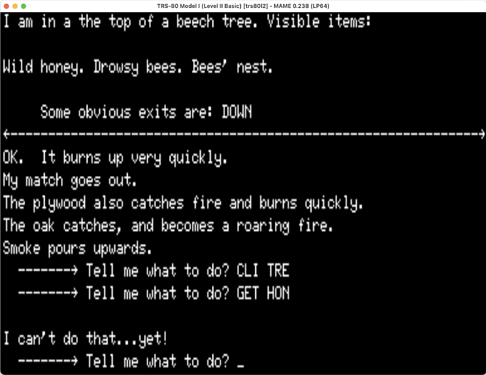For example, ScottKit’s demo game Crystal Of Chaos doesn’t work in ADVENTUR/CMD, for precisely this reason (failing to cater for ADVENTUR/CMD’s different implementation of AUTOGET/AUTODROP):
The problem can be fixed by adding explicit unconditional GET and DROP actions for the objects affected by this issue (GET HONEY and DROP VASE in this example), hence my Pull Request.
